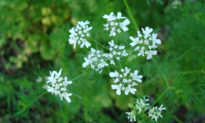To eat 30 plants a week, you can incorporate a variety of fruits, vegetables, legumes, grains, nuts, seeds, herbs, and spices into your diet.
How to eat 30 plants a week?
Here are some tips to help you achieve this goal:
- Include a wide range of fruits and vegetables: Aim to consume different types of fruits and vegetables in various colors. For example, you can include apples, avocados, bananas, bell peppers, blueberries, figs, kiwis, oranges, raspberries, and tomatoes.
- Incorporate legumes: Legumes such as beans, pulses, and peas are rich in fiber, protein, and minerals. You can include black beans, chickpeas, green beans, lentils, peas, and soybeans.
- Choose whole grains: Opt for whole grains like brown rice, oats, quinoa, and whole wheat flour. They are more nutritious and better for your blood sugar and blood fat levels compared to refined grains.
- Add nuts and seeds: Nuts and seeds provide protein, fiber, healthy fats, vitamins, and minerals. Consider almonds, chia seeds, flaxseeds, pumpkin seeds, sesame seeds, and sunflower seeds.
- Utilize herbs and spices: Herbs and spices not only add flavor but also contribute to your plant intake. Include basil, cilantro, mint, oregano, parsley, rosemary, sage, tarragon, black pepper, cumin, ginger, nutmeg, paprika, saffron, and turmeric.
- Be creative with your meals: Experiment with different recipes and combinations to include a variety of plants in your meals. Supercharge your salads with nuts, seeds, and a mix of vegetables. Use beans as a meat substitute or make delicious dips. Add hidden greens to dishes like stews and stir-fries.
- Snack on plant-based options: Replace unhealthy snacks with mixed nuts, berries, or sliced peppers to increase your plant intake.
- Consider Meatless Mondays: Dedicate at least one day a week to plant-based meals to prioritize plant foods in your diet.
Remember, you don't need to eat a large quantity of each plant for it to count. Even small amounts of herbs, spices, and other plant-based foods contribute to your overall plant intake.
Eating 30 plants a week for weight loss
Eating 30 plants a week can have numerous benefits for weight loss. Here's how it can help and some tips to incorporate more plants into your diet:
- Increased Fiber Intake: Plants are rich in dietary fiber, which can help you feel fuller for longer and reduce overall calorie intake. Fiber also aids in digestion and promotes regular bowel movements.
- Lower Calorie Density: Many plant-based foods, such as fruits and vegetables, are low in calories but high in volume. This means you can eat larger portions without consuming excessive calories, which can support weight loss.
- Nutrient Density: Plants are packed with essential vitamins, minerals, and antioxidants that are important for overall health. By including a variety of plants in your diet, you ensure that you're getting a wide range of nutrients while keeping your calorie intake in check.
- Improved Gut Health: Eating a diverse range of plants can promote a healthy gut microbiome, which has been linked to weight management. A diverse gut microbiome is associated with better digestion, metabolism, and reduced inflammation.
What Does Professor Tim Spector Eat in a Day?
How to eat 30 plants a week meal plan
Here are some examples of plant-based meals that you can try:
Bowl Plant-Based Recipes:
-
- Best Buddha Bowl: Cozy roasted sweet potatoes, chickpeas, and brown rice with massaged kale, radishes, carrots, and cabbage.
- Kimchi Brown Rice Bliss Bowls: Savory grilled tempeh, kimchi, and peanut sauce.
- Adzuki Bean Bowls: Refreshing grain bowl with adzuki beans or black beans.
- Roasted Veggie Grain Bowl: Bountiful bowl with roasted veggies, hearty quinoa, and pepitas, topped with a super-green kale pesto sauce.
- Cauliflower Rice Kimchi Bowls: Grain-free bowl with cauliflower rice, baked tofu, shiitake mushrooms, and a coconut-ginger-lime sauce.
- Macro Veggie Bowl: Steamed veggies, brown rice, sauerkraut, mung beans, and a sunny turmeric-tahini sauce.
Plant-Based Recipes for Burgers and Sandwiches:
-
- Best Veggie Burger: Hearty, savory, smoky plant-based burger that is grill-able.
- Portobello Mushroom Burger: Grilled portobello mushroom caps marinated in balsamic and tamari, served on hamburger buns with toppings.
- Crispy Baked Falafel: Crispy falafel with pickled onions, tahini sauce, fresh herbs, and veggies.
- Chickpea Salad Sandwich: Mayo-free chickpea salad with tahini, olives, and blanched green beans.
- Crispy Shiitake BLT: Plant-based BLT with crispy shiitake bacon on toasted whole grain bread with vegan mayo.
Veggie-Centric Plant-Based Dinner Recipes:
-
- Cauliflower Steaks with Lemon Salsa Verde: Roasted cauliflower "steaks" with a luscious, lemony sauce and salsa verde.
- Stuffed Acorn Squash: Acorn squash stuffed with a tempeh and mushroom filling, topped with pomegranate arils.
- Twice Baked Sweet Potatoes: Baked sweet potatoes topped with a broccoli salad and a creamy, cozy sauce made from sweet potato flesh, cashews, and rosemary.
- Stuffed Poblano Peppers: Rice and bean filling with cauliflower, bell pepper, spinach, and zesty tomatillo salsa.
- Mediterranean Stuffed Eggplant: Grilled or baked eggplant stuffed with Mediterranean flavors.
- Spaghetti Squash with Chickpeas and Kale: Comforting dish with spaghetti squash, chickpeas, kale, sun-dried tomatoes, and fresh rosemary.
Noodles and Sushi:
-
- Sesame Soba Noodles: Yummy noodles with seasonal veggies like snap peas, radishes, cucumber, carrots, cabbage, and sautéed mushrooms.
- Maki Sushi: Veggie sushi rolls with roasted shiitake mushrooms and carrot-ginger sauce for dipping.
- Radish "Noodles" with Cashew-Coconut Sauce: Veggie-forward bowl with spiralized daikon radishes or zucchini noodles and a cashew-coconut sauce.
- Peanut Noodle Kale Bowls: Quick and easy peanut noodles with buckwheat soba noodles or brown rice pasta.
Substantial Salads:
-
- Radish Salad: Roasted and raw radish salad with a lemony radish greens pesto.
- Kale Salad with Carrot Ginger Dressing: Energizing salad with creamy avocado, toasted seeds, crispy roasted chickpeas, dried cranberries, and a carrot-ginger dressing.
- Roasted Cauliflower Salad: Salad with French green lentils, briny olives, pickled onions, and dried fruit.
- Healthy Taco Salad: Plant-based taco salad with crispy tortilla strips, shiitake-walnut taco "meat," and a creamy cilantro lime dressing.
Health benefits of incorporating a variety of plants
Incorporating a variety of plants into your diet can have numerous health benefits. Here are some of the key advantages supported by the search results:
- Supports immune system function: Plant-based foods provide essential nutrients, vitamins, minerals, phytochemicals, and antioxidants that help keep your cells healthy and your immune system strong. This can help protect against infections and diseases.
- Reduces inflammation: The nutrients found in plants work to resolve inflammation in the body. Phytochemicals and antioxidants found in plants neutralize toxins and free radicals, which can contribute to inflammation. By reducing inflammation, a plant-based diet may help protect against inflammatory diseases, including cancer.
- Aids in maintaining a healthy weight: Eating a plant-based diet can help with weight management. Plant-based meals are typically lower in calories and higher in fiber, which can help you feel fuller for longer. Additionally, plant-based diets remove many foods that contribute to weight gain, such as processed and high-fat foods.
- High in fiber: Plants are rich in dietary fiber, which offers several benefits. Fiber improves gut health, aids in nutrient absorption, lowers cholesterol levels, stabilizes blood sugar, and promotes good bowel management. It is particularly important for reducing the risk of colorectal cancer.
- Reduces the risk of other diseases: Incorporating a variety of plants into your diet can also reduce the risk of other diseases, including heart disease, stroke, diabetes, and certain mental health illnesses. Plant-based diets provide all the necessary nutrients for optimal health and are often higher in fiber and phytonutrients.
The 5 things you NEED to know for better GUT HEALTH with Professor Tim Spector
Tips for meal planning to ensure eating 30 plants a week
Here are some tips for meal planning to ensure you eat 30 plants a week:
- Start with a variety of fruits and vegetables: Include a wide range of colorful fruits and vegetables in your meal plan. Aim for different colors each day, as each color provides different antioxidants and phytochemicals that can help reduce inflammation and boost your immune system.
- Incorporate legumes and whole grains: Legumes (such as beans, lentils, and chickpeas) and whole grains (like quinoa, brown rice, and whole wheat) are excellent sources of plant-based protein and fiber. Include them in your meals to add variety and nutritional value.
- Experiment with herbs and spices: Herbs and spices not only add flavor to your meals but also provide additional health benefits. Many herbs and spices have antiviral, antifungal, and antibacterial properties. So, don't forget to include them in your meal planning.
- Include nuts and seeds: Nuts and seeds are packed with healthy fats, protein, and various nutrients. Add them to your meals or snacks for a crunchy texture and extra nutritional value. Examples include almonds, walnuts, chia seeds, and hemp seeds.
- Try fermented foods: Fermented vegetables, like sauerkraut and kimchi, are not only delicious but also provide probiotics (good bacteria) to your digestive system. They can contribute to a diverse gut microbiome. Just be mindful of portion sizes to avoid bloating and gas.
- Plan your meals in advance: Take some time to plan your meals for the week. This will help ensure that you have a variety of plant-based options and can incorporate different fruits, vegetables, legumes, whole grains, herbs, and spices into your meals.
- Shop at local farmers' markets or join a CSA: Local farmers' markets and community-supported agriculture (CSA) programs are great places to find fresh and seasonal produce. Supporting local farmers not only reduces your carbon footprint but also ensures that you're getting the freshest vegetables and fruits.
- Consider frozen and canned options: Don't overlook frozen and canned fruits and vegetables. They can be just as nutritious as fresh produce and are convenient options to have on hand. They can count towards your 30 plants per week goal.
Remember, it's important to consult with a healthcare professional or registered dietitian before making any significant changes to your diet.
Eating 30 plants a day?
Eating 30 plants a day can have numerous benefits for your health. While the search results primarily focus on the recommendation of consuming 30 different plants per week, we can still explore the potential advantages of incorporating a variety of plant foods into your daily diet. Here are some potential benefits of consuming 30 plants a day:
- Improved Gut Health: Eating a diverse range of plant foods can promote the growth of different species of beneficial bacteria in your gut, leading to a healthier gut microbiome. This can support digestion, nutrient absorption, and overall gut function.
- Increased Nutrient Intake: Different plants offer a wide array of essential nutrients, including vitamins, minerals, antioxidants, and phytochemicals. By consuming 30 plants a day, you can ensure a more comprehensive intake of these vital nutrients, which are essential for optimal health and well-being.
- Enhanced Antioxidant Protection: Plant foods are rich in antioxidants, which help protect your cells from damage caused by harmful free radicals. By consuming a variety of plants, you can benefit from a diverse range of antioxidants, providing enhanced protection against oxidative stress and inflammation.
- Reduced Risk of Chronic Diseases: A diet rich in plant foods has been associated with a lower risk of chronic diseases, such as heart disease, type 2 diabetes, and certain types of cancer. The wide range of nutrients and bioactive compounds found in plants can contribute to these protective effects.
- Weight Management: Plant-based diets, which are typically high in fiber and low in calories, have been linked to weight management and a lower risk of obesity. Consuming 30 plants a day can help increase your fiber intake, promoting feelings of fullness and supporting healthy weight management.
- Improved Mental Health: Plant-based diets have been associated with improved mental well-being and a reduced risk of depression and anxiety. The diverse nutrients and phytochemicals found in plant foods may play a role in promoting brain health and emotional well-being.
NTDVN hopes this article can answer your questions about: How to eat 30 plants a week.

































































